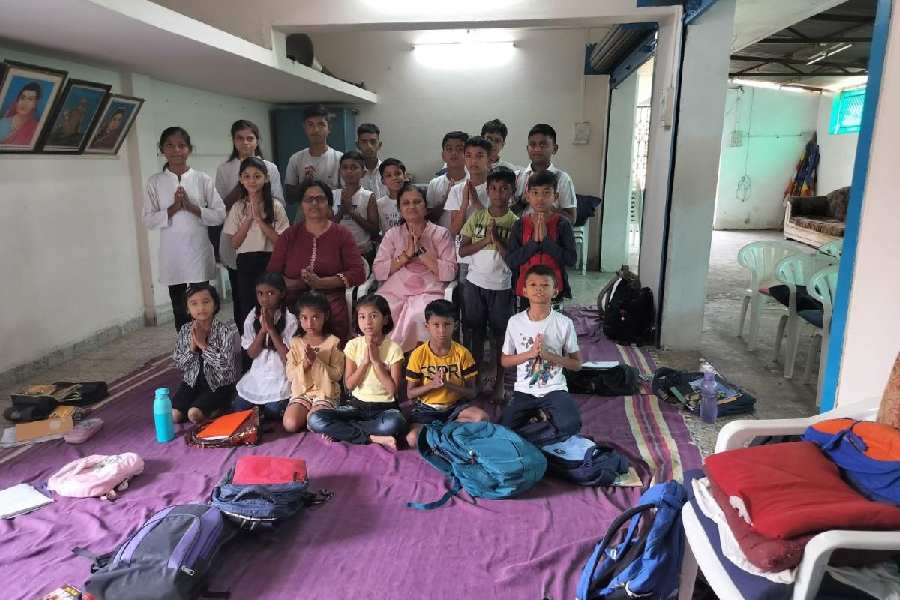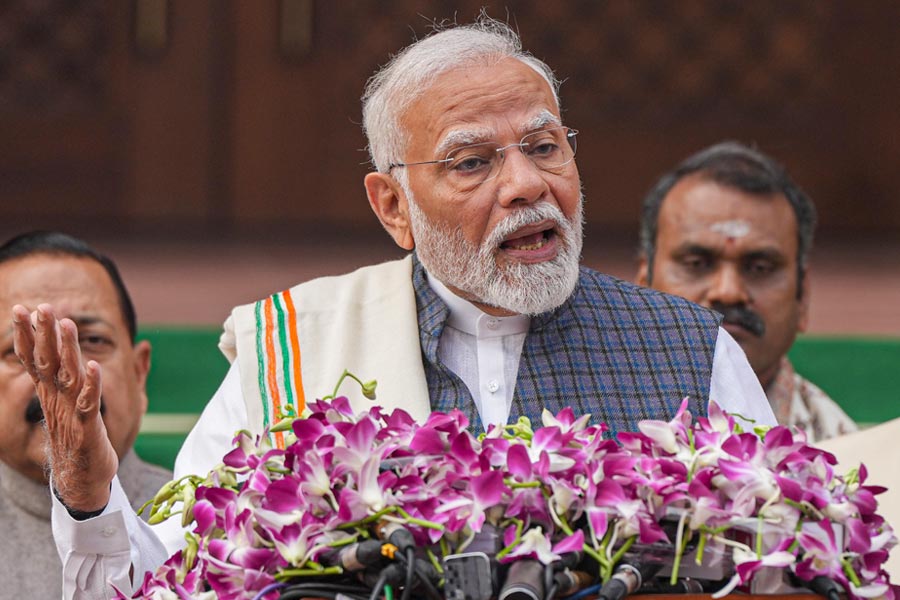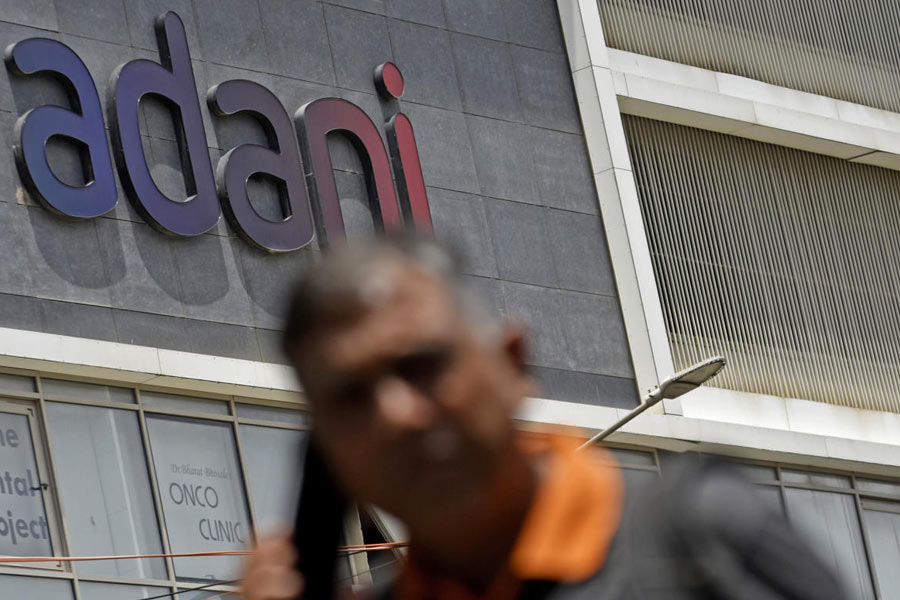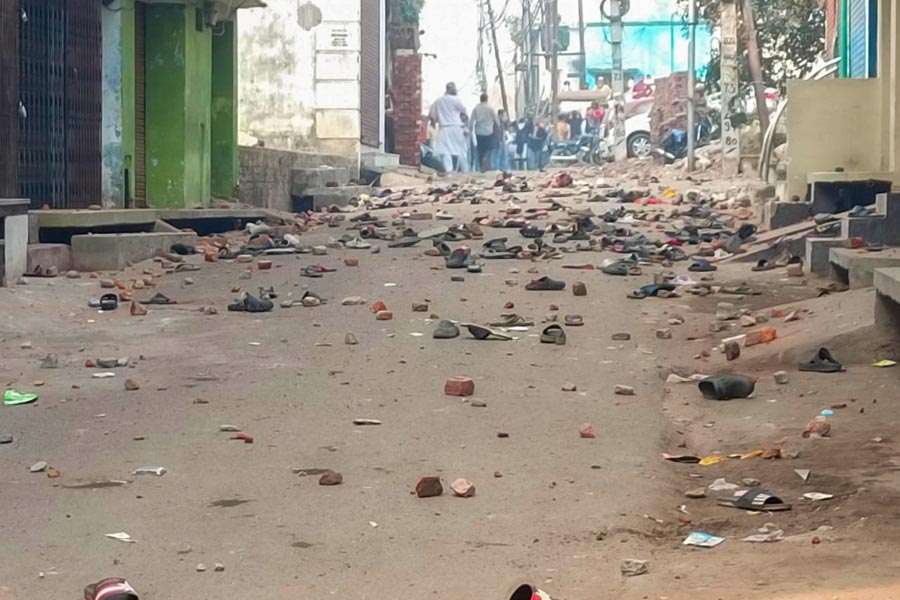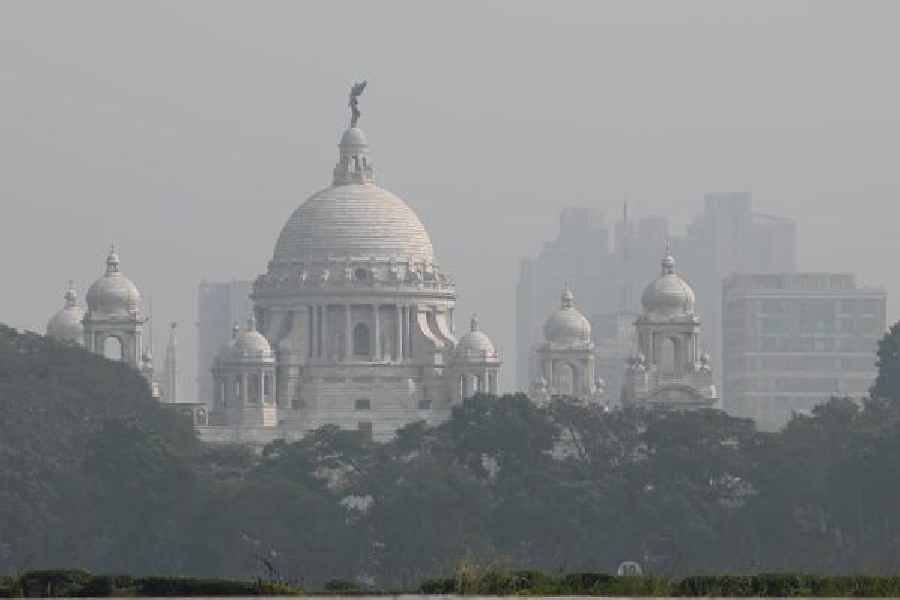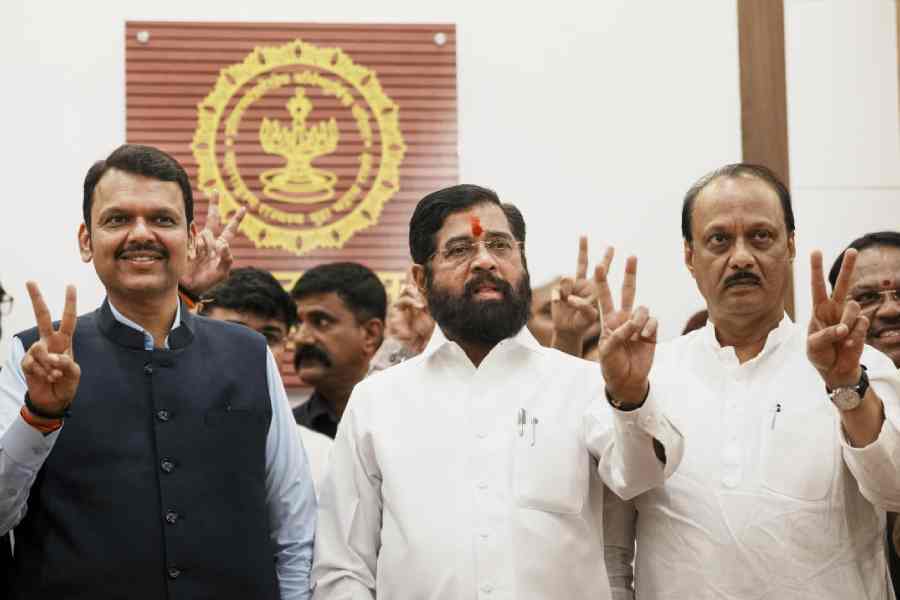After Sudesh Washnik died of pancreatitis in 2011, his wife Babita, then a 37-year-old homemaker, took over his drafting centre in front of the Sakoli block sub-registrar’s office so she could support her children’s education.
Her daughter is now a graduate and her son is doing his B.Com.
Babita, a Class XII pass-out, says she merely followed Bhimrao Ambedkar’s advice to “educate, agitate, organise”. She also emphasises the guidance she received from the local Buddha Vihara in educating her children.
“Ambedkar’s teachings and the support I received from the Buddha Vihara opened a path for me in life. Without education, there is no dignity. You cannot open your mouth without education. I put all my efforts into educating my children,” Babita, a Buddhist, said.
Without her own higher secondary education, she could not have run her centre, which principally drafts petitions and applications for its customers.
Babita’s life embodies the role Buddhism has played in the empowerment of the Scheduled Castes who have embraced the religion.
Hundreds of thousands, particularly members of the SC Mahar caste, had converted to Buddhism in this region of central India in 1956 along with Ambedkar. Since then, the progress the Mahars have made in education and political consciousness has been remarkable, several academics said. They have all abandoned their traditional caste-based occupations.
The subject of Dalit uplift was stoked last August when the Supreme Court passed an order allowing the states to sub-categorise these communities, based on their levels of backwardness, in the context of reservation. While BJP-ruled Haryana has begun the process, Congress-ruled Telangana and Karnataka have set up commissions to study how sub-categorisation should be done.
But many Ambedkarites believe that the Mahars’ trajectory is proof that while reservation is important to Dalit uplift, equally helpful — and perhaps equally necessary — is a cultural shift.
It’s visible in the villages of the Buddhists, which mark a contrast with the habitations of Hindu Dalits. Every Buddhist village has a Buddha Vihara that provides ample opportunity for all-round education. The Vihara in Babita’s village, Sakoli, has a Buddha idol, a hall and a library.
“The library has books on Buddhism, Ambedkar’s philosophy, laws, the Constitution and moral values. Right from childhood, we are connected with books,” Babita said.
“In the hall, they discuss constitutional values, rights, duties, laws, politics and other issues. Experts on Buddhism and career opportunities deliver talks. It helps shape the children’s outlook.”
Most families in the village have at least one member with a formal job, government or private. None has taken up the caste’s traditional occupations — those of sweeper, scavenger and night-watchman.
Dalits are 13 per cent of Maharashtra’s population. Nearly half of them are Buddhists, making up 73 per cent of Indian Buddhists. Their empowerment relative to Hindu Dalits owes not just to jobs and college degrees but to better human indices.
According to the 2011 population census, the sex ratio — the number of females per 1,000 males — was 965 among Buddhists against 939 among Hindus, 951 among Muslims, 903 among Sikhs and 954 among Jains. Only Christians had a better sex ratio, at 1,023.
The fertility rate — the average number of children born to a woman — was the lowest among Buddhists at 1.39, according to the National Family Health Survey, 2019-21. The figure was 2.3 for Muslims, 1.94 for Hindus, 1.88 for Christians, 1.61 for Sikhs and 1.6 for Jains.
The literacy rate among Buddhists was 81.29 per cent according to the 2011 census against 73.3 per cent among Hindus, 68.5 per cent among Muslims, and 75.39 per cent among Sikhs. Only Jains, at 94.88 per cent, and Christians, at 84.53 per cent, outdidthe Buddhists.
Vaishali, a Buddhist in her mid-40s who works with a government organisation in Nagpur, runs a Sunday Dhamma School in the Viswakarma Nagar area with her friend Karuna Moon.
“Babasaheb said every person who has progressed in life should pay back one-fifth of their time, talent and treasure for the welfare of others in the community,” Vaishali said.
“In our Sunday Dhamma School, we teach children about erasing all regressive thoughts, such as social inequality, from their minds.”
Pupils of Class VI and above are imparted the first verse of the Dhammapada, the Buddha’s path of wisdom, which says the “mind precedes all mental states”.
“We tell them that your mind is a garden and it depends how you cultivate it. This is how we orient them towards a noble path,” Vaishali said.
At Siddharthnagar village in Chandrapur district, the physically challenged Marooti Bhasarkar, 42, said Buddhism imparted political strength to the community, too.
“We are given importance because of our unity. When the local MLA visits the Chichpalli gram pancahayat, they also visit our village though we are just 40 families. We don’t vote blindfolded. We place our issues before them and make informed decisions on voting,” Bhasarkar said.
Y.S. Alone, a professor at Jawaharlal Nehru University, Delhi, who specialises on caste studies and interpretations, said the Buddha Viharas discuss subjects related to modernity while the topics discussed in (Hindu) temples are about sustaining orthodoxy.
“After conversion to Buddhism, the SCs have left their traditional occupation, which marks the beginning of the aspiration to progress,”Alone said.
“In the Buddha Viharas, they discuss the biases attached to traditional occupations. This leads to transformation, as we see with the neo-Buddhists who were traditionally from the Mahar caste within the Hindu fold.”
Tanoj Meshram, associate professor of public policy at the S.P. Jain Institute of Management and Research, Mumbai, said the Buddhist Dalits had enriched their social, cultural and economic conditions after conversion, combining Ambedkar’s ideology with Buddhist philosophy.
“Babasaheb had asked his followers to educate, agitate and organise. While Buddhism helped liberate them from the stigma of untouchability and provided them with a philosophical basis for the pursuit of a just society, Babasaheb’s ideology and movement helped them gain strength, become independent and mobilise resources for social change,” Meshram said.
“The SC people who remained Hindus could not escape the social oppression and indignity. As a result, they failed to stand up for their rights. Many of them are still trapped in their traditional occupations and are not doing so well on human development indices the way the Buddhists are.”

